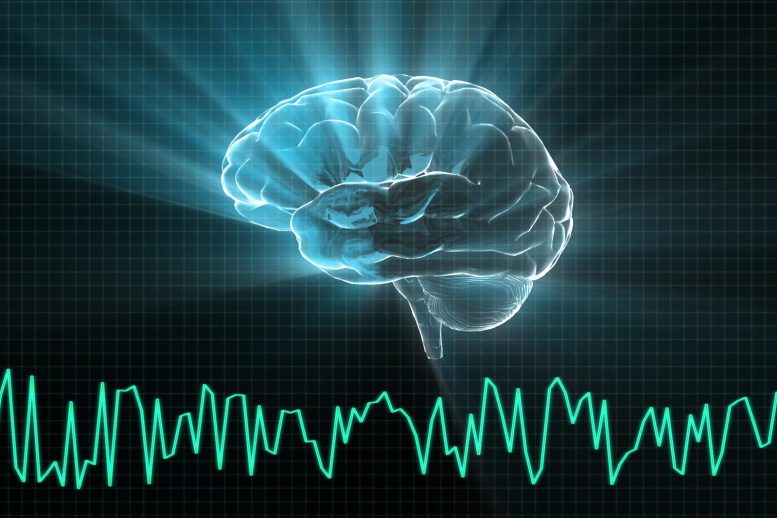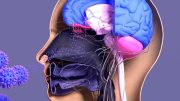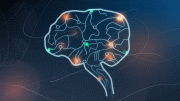
In a new study, scientists discovered that restoring certain gamma signals in a brain region responsible for processing smells can help alleviate depression. This discovery suggests potential new methods for treating depression, particularly in instances where conventional medications are ineffective.
Study proposes role for gamma oscillations in future treatment.
Researchers have found that restoring gamma signals in the olfactory bulb, a brain region processing smells, can counteract depression. This breakthrough discovery highlights the potential of gamma-enhancement as a new approach to treat depression when conventional drugs fail.
Led by researchers from NYU Grossman School of Medicine and University of Szeged in Hungary, a new study in mice and rats found that restoring certain signals in a brain region that processes smells countered depression.
Published in the journal Neuron on May 9, the study results revolve around nerve cells (neurons), which “fire” – or emit electrical signals – to transmit information. Researchers in recent years discovered that effective communication between brain regions requires groups of neurons to synchronize their activity patterns in repetitive periods (oscillations) of joint silence followed by joint activity. One such rhythm, called “gamma,” repeats about 30 times or more in a second, and is an important timing pattern for the encoding of complex information, potentially including emotions.
Although its causes remain poorly understood, depression is reflected in gamma oscillation changes, according to past studies, as an electrophysiological marker of the disease in brain regions that manage the sense of smell, which have also been tied to emotions. These regions include the olfactory bulb adjacent to the nasal cavity, which is thought to be a source and “conductor” of brain-wide gamma oscillations.
To test this theory, the current study authors shut down the function of the bulb using genetic and cell signaling techniques, observed a related increase of depression-like behaviors in study rodents, and then reversed these behaviors using a device that boosted gamma signals of the brain at their natural pace.
“Our experiments revealed a mechanistic link between deficient gamma activity and behavioral decline in mice and rat models of depression, with the signal changes in the olfactory and connected limbic systems similar to those seen in depressed patients,” says corresponding study author Antal Berényi, MD, PhD, adjunct assistant professor in the Department of Neuroscience and Physiology at NYU Langone Health. “This work demonstrates the power of gamma-enhancement as a potential approach for countering depression and anxiety in cases where available medications are not effective.”
Major depressive disorder is a common, severe psychiatric illness often resistant to drug therapy, the researchers say. The prevalence of the condition has dramatically increased since the start of the pandemic, with more than 53 million new cases estimated.
Gamma Waves Linked to Emotions
Disease-causing changes in the timing and strength of gamma signals, potentially caused by infections, trauma, or drugs, from the olfactory bulb to other brain regions of the limbic system, such as the piriform cortex and hippocampus, may alter emotions. However, the research team is not sure why. In one theory, depression arises, not within the olfactory bulb, but in changes to its outgoing gamma patterns to other brain targets.
Removal of the bulb represents an older animal model for the study of major depression, but the process causes structural damage that may cloud researchers’ view of disease mechanisms. Thus, the current research team designed a reversible method to avert damage, starting with a single, engineered strand of DNA encapsulated in a harmless virus, which when injected into neurons in the olfactory bulbs of rodents caused the cells to build certain protein receptors on their surfaces.
This let the researchers inject the rodents with a drug, which spread system-wide, but only shut down the neurons in the bulb that had been engineered to have the designed drug-sensitive receptors. This way the investigators could selectively and reversibly switch off the communication between the bulb partner brain regions. These tests revealed that chronic suppression of olfactory bulb signals, including gamma, not only induced depressive behaviors during the intervention, but for days afterward.
To show the effect of the loss of gamma oscillation in the olfactory bulb, the team used several standard rodent tests of depression, including measures of the anxiety that is one of its main symptoms. The field recognizes that animal models of human psychiatric conditions will be limited, and so uses a battery of tests to measure depressed behaviors that have proven useful over time.
Specifically, the tests looked at how long animals would spend in an open space (a measure of anxiety), whether they stopped swimming earlier when submerged (measures despair), whether they stopped drinking sugar water (took less pleasure in things), and whether they refused to enter a maze (avoided stressful situations).
The researchers next used a custom-made device that recorded the natural gamma oscillations from the olfactory bulb, and sent those paced signals back into the rodents’ brains as closed-loop electrical stimulation. The device was able to suppress gamma in healthy animals or amplify it. Suppression of gamma oscillations in the olfactory lobe induced behaviors resembling depression in humans. In addition, feeding an amplified olfactory bulb signal back into the brains of depressed rats restored normal gamma function in the limbic system, and reduced the depressive behaviors by 40 percent (almost to normal).
“No one yet knows how the firing patterns of gamma waves are converted into emotions,” says senior study author György Buzsáki, MD, PhD, the Biggs Professor in the Department of Neuroscience and Physiology at NYU Langone Health and a faculty member in its Neuroscience Institute. “Moving forward, we will be working to better understand this link in the bulb, and in the regions it connects to, as behavior changes.”
Reference: “Reinstating olfactory bulb-derived limbic gamma oscillations alleviates depression-like behavioral deficits in rodents” by Qun Li, Yuichi Takeuchi, Jiale Wang, Levente Gellért, Livia Barcsai, Lizeth K. Pedraza, Anett J. Nagy, Gábor Kozák, Shinya Nakai, Shigeki Kato, Kazuto Kobayashi, Masahiro Ohsawa, Gyöngyi Horváth, Gabriella Kékesi, Magor L. Lorincz, Orrin Devinsky, György Buzsáki and Antal Berényi, 9 May 2023, Neuron.
DOI: 10.1016/j.neuron.2023.04.013
Along with Berényi and Buzsáki, the study was led by Orrin Devinsky, MD, professor in the in Department of Neurology at NYU Langone, and director of its Comprehensive Epilepsy Center. Berényi is also principal investigator of the Momentum Oscillatory Neuronal Networks Research Group, Department of Physiology at the University of Szeged in Hungary, along with first study authors Qun Li and Yuichi Takeuchi, and authors Jiale Wang, Levente Gellért, Livia Barcsai, Lizeth Pedraza, Anett Nagy, Gábor Kozák, Gyöngyi Horváth, Gabriella Kékesi and Magor Lőrincz. Study authors Shinya Nakai and Masahiro Ohsawa are with the Department of Neuro-pharmacology, Graduate School of Pharmaceutical Sciences, at Nagoya City University in Japan. Takeuchi is also faculty in the Department of Physiology, Osaka City University Graduate School of Medicine and Faculty of Pharmaceutical Sciences, Hokkaido University in Japan. Also study authors were Shigeki Kato and Kazuto Kobayashi Department of Molecular Genetics, Institute of Biomedical Sciences at Fukushima Medical University School of Medicine in Japan.
Funding for the study was provided through grants from the Hungarian Academy of Sciences Momentum II program, the National Research, Development and Innovation Office of Hungary, the Ministry of Innovation and Technology of Hungary, the Ministry of Human Capacities, Hungary, the Hungarian Scientific Research Fund, the Hungarian Brain Research Program, the European Union Horizon 2020 Research and Innovation Program, the Japan Society for the Promotion of Science, the Japan Ministry of Education, Culture, Sports, Science and Technology, the Japan Agency for Medical Research and Development, as well as by support from The Kanae Foundation for the Promotion of Medical Science, the Life Science Foundation of Japan, the Takeda Science Foundation, the Japanese Neural Network Society, and the János Bólyai Fellowship.









Well, we have known there is an olfactory connection to mood for a very long time, nosegay. That reminds me that I have a bunch of incense resin I should burn right now in order to alleviate my symptoms of discussed diagnosed disorder. Perhaps one day I can call the doctor and go in for a neurological oscillation reset, or should I hire an electronics technician? Better yet why not just order the device from Amazon? Maybe go to a tattoo and body piercing shop for the cybernetic installation.